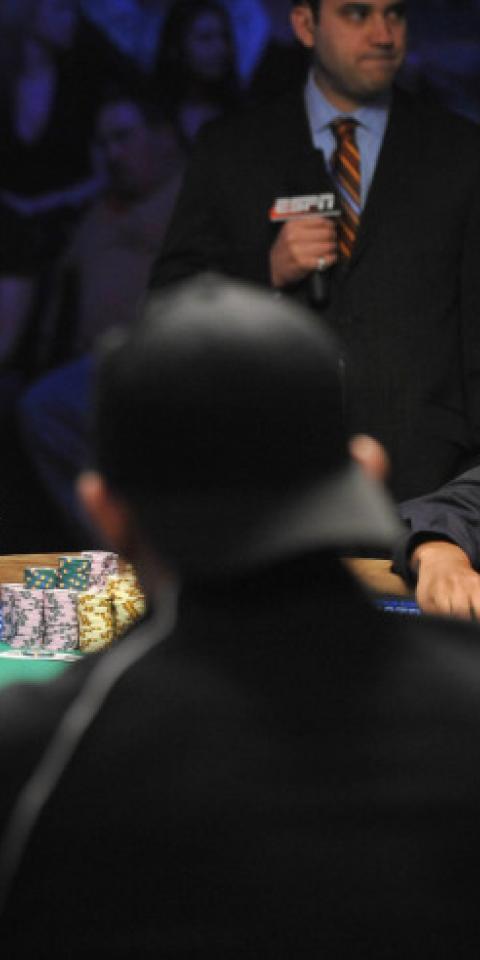The poker face. It’s one of the core concepts of poker that has been adopted by mainstream culture.
You don’t have to be a poker player to understand the meaning of a poker face. It’s commonly used by everyone from newscasters to Lady Gaga. The image of a stone-faced cowboy throwing out a huge bet has been romanticized by countless movies and TV shows over the years. The poker face is here to stay.
But is the poker face still an important part of the modern game of poker?
In our ongoing Poker 101 educational series, we’re going to dig deep into the poker face and take a look at whether it plays a role in the modern game of poker.
What is a Poker Face?
In the simplest terms, a poker face is just a blank expression.
A blank expression is obviously useful in poker because you’re less likely to give off tells. A tell is a change in a player’s behavior or demeanor that might telegraph the strength of their hand.
For instance, a player glancing down at their chips immediately after seeing the flop might indicate they have a strong hand and are considering how much to bet.
You can take that a step further, however, and point to someone like Phil Ivey, who’s renowned for his intimidating poker face at the poker table.
In this article we’re discussing live poker because there are no poker faces in online poker. There are a small handful of online players who insist that you can tell a lot about a player by the avatar they choose but that’s really a different thing altogether.
Poker tells and reading players in general goes far beyond just the face, and experienced poker players will sometimes take into account things like verbal cues, hands, eyes and overall body movement.

How Do I Get a Poker Face?
Generally we all give off tiny tells of some sort whether we think about it or not, but developing a poker face isn’t that difficult.
You don’t need the stone-cold gaze of Phil Ivey to have an acceptable poker face. Daniel Negreanu, for instance, is usually pretty cheerful at the table. Phil Hellmuth likes to obscure his face with his hands when he’s involved in a big pot.
The important thing is to remain consistent. You’ve got to have the same look whether you’re running a huge bluff or you’ve got a royal flush. It can also be helpful to try to remain as calm as possible.
Of course you can also give off reverse tells, such as pretending to be nervous when you’ve got a made hand, but that’s somewhat more advanced and it’s usually better for beginner poker players to stick with a more neutral look.
How Important is a Strong Poker Face?
It might be surprising to the general public but for the most part having a killer poker face is usually not especially important when starting out in poker. If you can avoid grinning ear to ear every time you pick up aces, you’re probably off to a good start.
The problem with poker tells in general is that it can be difficult to tell whether a nervous player is acting that way because they are bluffing or have a strong hand.
It’s sometimes easier to understand tells at a higher level of play because it’s clearer what players are trying to accomplish. New players might not fully understand whether they are bluffing or value betting when they put money in a pot.
Quite often you can ascertain much more from a player by things like raise frequencies or bet sizing. There are quite a few players who simply don’t utilize physical tells all that much in their game.
That’s not to say there’s no value in having a solid poker face. It pretty much goes without saying that Phil Ivey’s famous intimidating gaze has helped him win thousands over the years.
When attempting to be a winning poker player, you should always try to avoid leaks in your game as much as possible and a transparent poker face would definitely be one of them. Just don’t worry too much about it.
There are plenty of better places to start your poker education and the first step that any new player should take is memorizing the hand rankings for Hold’em. From there it’s a good idea to learn basic poker odds and the 10 best hands in Hold’em.




